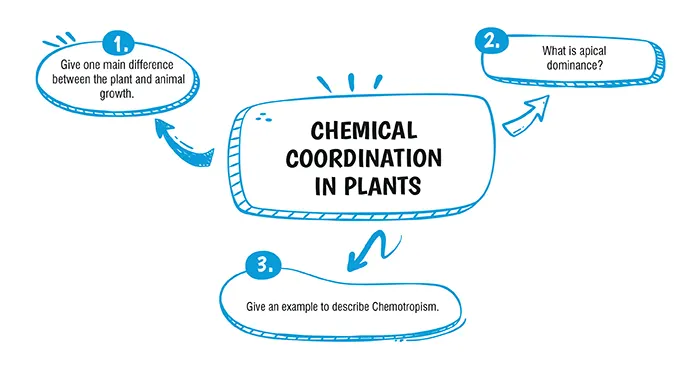Table of Contents

Ans. (d) Helps to overcome apical dominance
Explanation:
Auxin is the hormone that helps in overcoming apical dominance.
Ans. (c) Cytokinin
Explanation:
Cytokinin induces morphogenesis in plants by promoting cell division and differentiation.
Explanation:
Animals stop growing in size after they reach maturity whereas plants continue to grow in size indefinitely.
Explanation:
It is a phenomenon in which the apical bud suppresses the growth of lateral buds. The lateral buds can develop into new branches only when the apical bud is removed.
Explanation:
Chemotropism is the tropic movement of plant parts in response to some chemical. For example, the movement of the pollen tube towards the ovary takes place due to the absorption of calcium and borate from the style of carpel.
Download Mind Map of this chapter
Download NowWant to Practice Mock Tests of this chapter
Practice NowDownload Important Questions of this chapter
Download Now| Chapter No. | Chapter Name |
|---|---|
| Chapter 1 | Structure of Chromosome, Cell Cycle and Cell division |
| Chapter 2 | Genetics: Mendel's law of Inheritance |
| Chapter 3 | Absorption by Roots- The Processes Involved |
| Chapter 4 | Transpiration |
| Chapter 5 | Photosynthesis |
| Chapter 6 | Chemical Coordination in Plants |
| Chapter 7 | The Circulatory System |
| Chapter 8 | The Excretory System |
| Chapter 9 | The Nervous System and Sense Organs |
| Chapter 10 | The Endocrine System |
| Chapter 11 | The Reproductive System |
| Chapter 12 | Human Population |
| Chapter 13 | Human Evolution |
| Chapter 14 | Pollution |
CBSE Important Questions Class 10
ICSE Important Questions Class 10
CBSE Important Questions Class 10
ICSE Important Questions Class 10